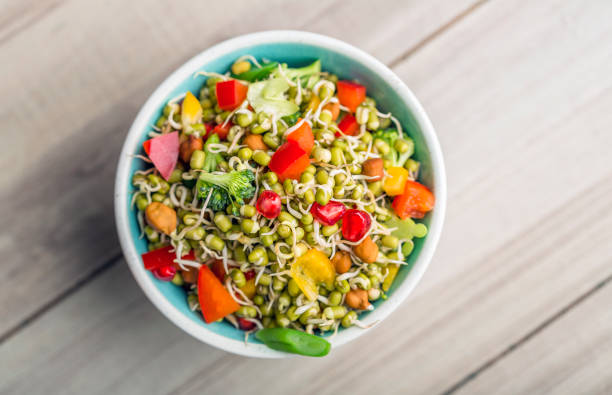Introduction Well Health Organic.com:Vegetarian Protein Sources
Plant-based diets have been increasingly popular in recent years, whether for ethical, environmental, or health-related reasons. Making sure you get enough protein, which is essential for good health, is one of the main worries for those making the switch to a vegetarian diet. Luckily, there are many different vegetarian protein sources accessible, providing a variety of choices to satisfy dietary requirements and uphold a balanced diet.
Understanding Protein Needs
Understanding the function of protein in the body is crucial before exploring vegetarian protein sources. Amino acids, the building blocks of tissues, muscles, and organs, are what make up proteins. They are also essential for many other body processes, such as hormone regulation, immunological response, and metabolism.
For an average adult, the Recommended Dietary Allowance (RDA) for protein is 0.8 grams per kilogram of body weight per day. Individual requirements for protein, however, could differ depending on things like age, sex, degree of activity, and general health.
Legumes: A broad collection of plants that includes beans, lentils, peas, and chickpeas are sources of vegetarian protein. They are great providers of fiber, protein, and other important nutrients. As an illustration:
These flexible options—black beans, kidney beans, and pinto beans—can be used to make veggie burgers, salad dressings, soups, and chili.
Because they cook quickly and are high in protein, lentils are a great ingredient for soups, stews, and curries.
Garbanzo beans, sometimes referred to as chickpeas, are a versatile food that may be added to salads and Mediterranean recipes, or they can be roasted for a crispy snack.
Tempeh and Tofu: Vegetarians and vegans love soy-based goods like tempeh and tofu because of their high protein content and adaptability. The taste of tofu is bland and can r and can be grilled, stir-fried, baked, or blended into smoothies. Tempeh has a nutty flavor and a firmer texture, making it suitable for grilling, sautéing, or crumbling into dishes like chili or tacos.
Seitan: Made from gluten, the protein present in wheat, seitan is often referred to as wheat gluten or wheat meat. It can be seasoned and prepared in a number of ways, including stir-frying, grilling, and braising. It has a chewy texture. Due to its exceptionally high protein content, seitan is a well-liked option for anyone trying to consume more protein.
Nuts and Seeds: Rich in protein, nuts and seeds also offer fiber, vitamins, minerals, and healthy fats. Include a range of nuts and seeds in your diet, such as hemp, flaxseed, almonds, walnuts, peanuts, and chia and chia seeds. They can be added to salads or yogurt, consumed as snacks, or utilized as components in homemade energy bars, granola, and yogurt dishes.
Quinoa: Quinoa is a pseudo-grain that is free of gluten and a full protein source. It’s a great choice for vegetarians and vegans because it has all nine essential amino acids. Cooked quinoa can be used as a base for grain bowls, added to salads and soups, or eaten as a side dish.
Dairy and Dairy Alternatives: Dairy products, especially whey and casein, are excellent sources of high-quality protein. Examples of these items are milk, yogurt, and cheese. Including dairy products or plant-based substitutes like cashew cheese, soy yogurt, or almond milk can help vegetarians meet their recommended daily intake of protein.
Keeping Your Vegetarian Diet in Check Even though there are many vegetarian protein options available, you must eat a range of foods to be sure you’re getting enough all of your nutritional needs. In addition to protein, focus on incorporating plenty of fruits, vegetables, whole grains, and healthy fats into your diet to provide essential vitamins, minerals, and antioxidants.
A balanced plate should have a source of protein (lentils, tofu, or tempeh), as well as a range of vibrant veggies, entire grains, and healthy fats. Try a variety of recipes, cooking techniques, and cuisines to keep your meals interesting and fun.
In conclusion, it is totally possible to meet your protein demands on a vegetarian diet with proper planning and awareness of vegetarian protein sources. You may take advantage of the numerous health advantages of a vegetarian lifestyle while still enjoying tasty and nourishing recipes by include a wide variety of plant-based foods into your diet.

